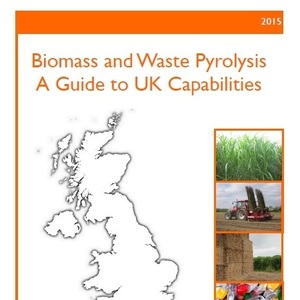Guide details UK pyrolysis progress




October 8, 2015
BY Anna Simet
The European Bioenergy Research Institute at Aston University has released a guide that reports United Kingdom capabilities and progress in fast, intermediate and slow pyrolysis, as well as torrefaction.
Profiling 17 different universities and companies involved in pyrolysis research and developments in the country, the Guide to UK Biomass and Waste Pyrolysis Activities provides information on what each respective school or firm is using as fuel, its conversion process and progress made toward commercialization. For example, according to the guide, Sustainable Energy Ltd. has designed a pilot-scale batch slow pyrolysis unit, installed and operated by IBERS, Aberystwyth University. A description of the plant says “feedstock is heated in a 1.25 m3 mesh-bottomed stillage inside the reactor unit, held at net-positive pressure to inhibit ambient air ingress. It is heated via direct feed of hot gases from the combustor. Recirculated gas from exothermic reaction supplements the heating process.”
The plant produces solid char for a variety of end uses.
Advertisement
Other companies and universities detailed in the guide are 2G BioPOWER, Anergy Ltd., Aston University, Conversion and Resource Evaluation Ltd., Cynar plc, Environmental Power International, Future Blends Ltd., Newcastle University, PYREG UK, Torftech Energy Ltd., University College London, University of Cambridge, University of Edinburgh, University of Leeds, University of Sheffield and University of York.
In a foreward authored by John Loughhead, chief scientific advisor at the U.K. Department of Energy and Climate Change, he says the government has supported advanced conversion technologies including pyrolysis, through funding mechanisms including the Contracts for Difference regime and innovation funding to push forward their development to a greater level of technological readiness.
Advertisement
But substantial challenges remain to delivering cost-effective pyrolysis at scale remain, according to Loughhead, who deems the guide as a key support to the sector.
This Guide to the UK’s Capabilities on Biomass and Waste Pyrolysis offers a way of breaking down these barriers and unleashing the potential of pyrolysis.
The authors of the guide note that all entries are based on material supplied by each organization.
Upcoming Events





